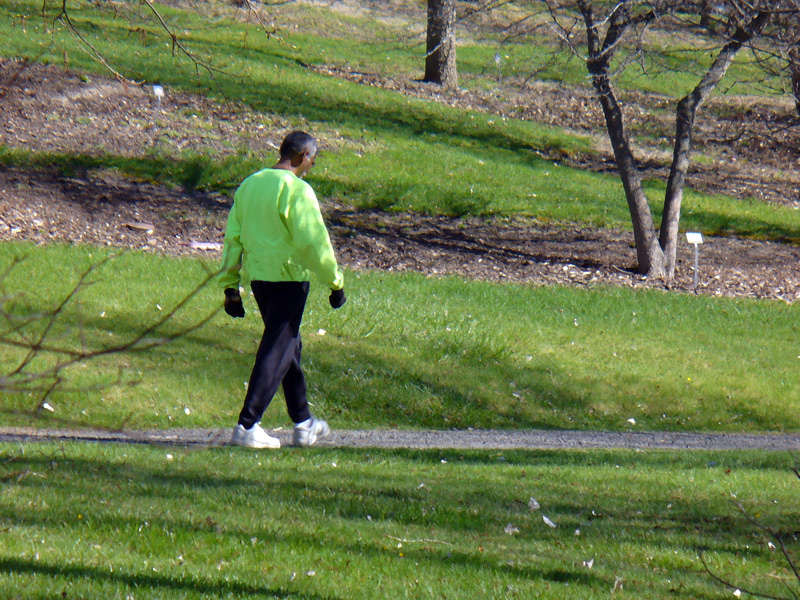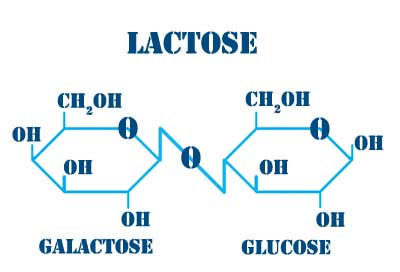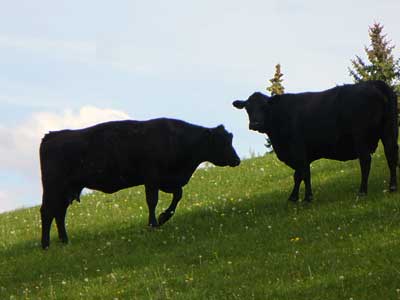Lactose Fuels Sports Performance: Milk Sports Drinks
Dairy sports drinks are ideal for optimal sports nutrition. Milk and yogurt drinks increase endurance and accelerate recovery after exercise. Lactose, the sugar found in milk, is a natural carbohydrate that can enhance exercise performance and post workout recovery. Lactose is found in milk, yogurt and most dairy products. Lactose is a disaccharide; this means that it is made up of two sugars, glucose and galactose. Many sugars are disaccharides. For example, table sugar, sucrose, is made up of glucose and fructose.

Picture: Milk can give you energy for life.
Lactose = 50% Galactose plus 50% Glucose
Many people assume that all sugars are similar. However, all sugars are not used the same for energy. Your body metabolizes glucose differently than it does fructose or galactose. This means that combining different types of sugars or carbohydrates can help optimize your workout. Milk sports drinks contain the ideal mix of carbohydrates to boost endurance while accelerating post workout recovery.
Galactose and Glucose Together = Ideal Fuel for Increased Exercise Endurance
Glucose and galactose work together to provide optimal fuel for peak performance. A 50%/50% mixture of glucose and galactose (exactly what you find in the dairy sugar lactose) significantly increased timed cycling trials when compared to galactose alone (Stannard et al. 2009). Glucose is used for fuel first; it increases insulin concentrations in the bloodstream. Galactose is used for fuel later and helps sustain energy. In other words, consuming glucose before endurance exercise provides a higher exogenous source of carbohydrates (CHO) during the initial stages of exercise, but galactose provides the predominant exogenous source of fuel during the latter stages of exercise. This reduces reliance on liver glucose from glycogen (O'Hara et al. 2012). Glucose concentrations in the blood peaked earlier than galactose or trehalose, another sugar (Jentjens and Jeukendrup 2003). Insulin levels were significantly higher when consuming glucose compared to galactose (Jentjens and Jeukendrup 2003, Stannard et al. 2009).
 A recent study showed that galactose consumption may increase endurance. Trained male cyclists consumed either 40 grams of galactose or glucose 30 minutes before a cycling endurance test. The cyclists could exercise longer to exhaustion (68.7 minutes) after consuming galactose compared to when they consumed the same amount of glucose (58.5 minutes) (O'Hara et al. 2014). In contrast, an earlier study with timed exercise trials showed no difference in cycling performance in male athletes consuming 75 grams of trehalose, galactose and glucose 45 minutes before exercise (Jentjens and Jeukendrup 2003).
A recent study showed that galactose consumption may increase endurance. Trained male cyclists consumed either 40 grams of galactose or glucose 30 minutes before a cycling endurance test. The cyclists could exercise longer to exhaustion (68.7 minutes) after consuming galactose compared to when they consumed the same amount of glucose (58.5 minutes) (O'Hara et al. 2014). In contrast, an earlier study with timed exercise trials showed no difference in cycling performance in male athletes consuming 75 grams of trehalose, galactose and glucose 45 minutes before exercise (Jentjens and Jeukendrup 2003).
Picture: Two Holstein heifers challenge each other to a race down the hill.

Galactose + Glucose = Accelerates Postexercise Glycogen Synthesis
Yogurt smoothies and milk sports drinks can recharge glycogen stores fast! While endurance is nice, it is also desirable to be able to recover quickly from a grueling workout. Adding galactose to your post workout drink may help you build up glycogen stores quicker than glucose alone. One study looked at the result of adding either galactose, fructose or glucose to a post workout maltodextrin drink in a 1:2 ratio. Maltodextrin is basically chains of glucose so the drink mixtures were either 100% glucose, 1/3 galactose:2/3 glucose, or 1/3 fructose:2/3 glucose. Liver glycogen concentrations and liver volume increased most in cyclists drinking the galactose maltodextrin drink, followed closely by the fructose maltodextrin drink. The glucose maltodextrin drink came in a very poor third. The other drinks were approximately twice as effective at postexercise recovery measured by replenishing glycogen (Décombaz et al. 2011).
Why Lactose Makes Sense As an Ideal Workout Fuel
Drinking a dairy based post workout drink makes sense from an energy standpoint. The two sugars found in milk and yogurt workout drinks work together for maximal energy. Glucose can be taken up and used directly by all the cells of your body. Other sugars have to be converted into glucose in the liver or other tissues before being used as energy. Galactose, for example, is converted into glucose using the Leloir pathway. This happens mostly in the liver but can occur in other tissues as well.
Current research suggests that if you combine a fast acting energy source (glucose) with a slower acting energy source (galactose) you will maximize your exercise performance and enhance post workout recovery.
Lactose has the added benefit of being a safe natural sugar found in whole foods like yogurt, Greek yogurt, milk and other dairy products. It is a whole natural food.
References:
Décombaz J1, Jentjens R, Ith M, Scheurer E, Buehler T, Jeukendrup A, Boesch C. Fructose and galactose enhance postexercise human liver glycogen synthesis. Med Sci Sports Exerc. 2011;43:1964-71. Pubmed. doi: 10.1249/MSS.0b013e318218ca5a Jentjens RL1, Jeukendrup AE. Effects of pre-exercise ingestion of trehalose, galactose and glucose on subsequent metabolism and cycling performance. Eur J Appl Physiol. 2003;88:459-65. Pubmed O'Hara JP, Carroll S, Cooke CB, King RF. The Effect of Pre-exercise Galactose and Glucose Ingestion on High-Intensity Endurance Cycling. Journal of Strength & Conditioning Research. January 28, 2014 (Epub ahead of print) Pubmed. O'Hara JP, Carroll S, Cooke CB, Morrison DJ, Preston T, King RF. Preexercise galactose and glucose ingestion on fuel use during exercise. Med Sci Sports Exerc. 2012 Oct;44(10):1958-67. Pubmed. doi: 10.1249/MSS.0b013e318258bf85.
